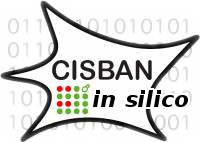Rule-Based Mediation
The Integrative Bioinformatics Group, headed by Neil Wipat and part of The Centre for Integrated Systems Biology of Ageing and Nutrition (CISBAN), has developed a semantic data integration system called rule-based mediation. The creation of accurate quantitative Systems Biology Markup Language (SBML) models is a time-intensive, manual process often complicated by the many data sources and formats required to annotate even a small and well-scoped model. Ideally, the retrieval and integration of biological knowledge for model annotation should be performed quickly, precisely, and with a minimum of manual effort.
Rule-based mediation is a method of semantic data integration applied to systems biology model annotation. The heterogeneous data sources are first syntactically converted into ontologies, which are then aligned to a small domain ontology by applying a rule base. We have demonstrated proof-of-principle of this application of rule-based mediation using off-the-shelf semantic web technology through two use cases for SBML model annotation. Through the use of existing tools, development time is decreased and usability is increased. Integrating resources in this way accommodates multiple formats with different semantics, and provides richly-modelled biological knowledge suitable for annotation of SBML models. We have established the feasibility of this approach as part of an automated SBML model annotation system, and are working on extending this system to provide larger-scale integration.
In short, rule-based mediation has a number of defining features:
- the data from syntactically and semantically different data sources are materialised within a core ontology for easy access and stable querying;
- the core ontology is a semantically-meaningful model of the biological domain of interest;
- implementation can be performed using off-the-shelf tools and mapping languages.
Licensing

Rule-Based Mediation Ontologies by Allyson Lister and her
employers is licensed under a Creative
Commons Attribution 2.0 UK: England & Wales License. The rule-based mediation Software Toolset is covered
under the LGPL.
For more information, see LICENSE.txt in the Subversion project.
Publications
- Lister, A. L., Lord, P., Pocock, M., Wipat, A. 2010. Annotation of SBML models through rule-based semantic integration. Journal of Biomedical Semantics, 1 (Suppl 1). pp. S3. doi:10.1186/2041-1480-1-S1-S3
- Lister, A. L., Lord, P., Pocock, M., Wipat, A., June 2009. Annotation of SBML models through rule-based semantic integration. In: Lord, P., Sansone, S.-A., Shah, N., Stephens, S., Soldatova, L. (Eds.), The 12th Annual Bio-Ontologies Meeting, ISMB 2009. pp. 49+. Zip file of the now-outdated supplementary material for this paper. This website, plus the subversion repository for this project, now take precedence.
- Rule-based mediation uses the MFO ontology as one of its syntactic ontologies. More information on MFO can be found in the following locations:
- Website: http://www.cisban.ac.uk/MFO
- Allyson L. Lister, Matthew Pocock, Anil Wipat. "Integration of constraints documented in SBML, SBO, and the SBML Manual facilitates validation of biological models", Journal of Integrative Bioinformatics, 2007-10-01, IB07 Article, doi:10.2390/biecoll-jib-2007-80.
Accessing Project Files
To view the entire integrated schema, you will need to download two Subversion projects:
- The Rule-Based Mediation Project
(browse SVN),
accessible from
svn checkout http://metagenome.ncl.ac.uk/subversion/rule-based-mediation/telomere/trunk rule-based-mediation - The Model Format OWL (MFO) Project, accessible from
svn checkout http://metagenome.ncl.ac.uk/subversion/MFO/trunk MFO
The rest of the instructions on this page assume you are working from within a local checkout of the rule-based mediation project.
File Types
*.owl are the ontology files themselves in OWL-DL format. The *.pprj files are the Protege project files, which you may find useful. Protege allows you to open an ontology directly by opening its .owl file, or indirectly by opening the .pprj file. By loading via the pprj file, you are loading preferences that were set in a previous Protege session and stored in the .pprj file. The *.repository file contains information for Protege about where to find external ontologies locally. In the case of rule-based mediation, you may wish to manually edit this file to ensure that it is pointing to the correct local files, though sensible defaults have been provided. Relative or absolute paths may be used.
Viewing and Manipulating Project Files
The majority of the project is composed of OWL ontologies. You may use any OWL-compatible editor to view these files. We recommend the freely-available Protege 3.4. While other editors should be fine, this is the editor that has been used in-house.
Information about each of the ontologies is available in the directories' README.txt files. However, to get you
started, if you wish to view the asserted set of classes and instances stored in the core ontology, then
you should load main/resources/ontologies/integratedschema/is-container.owl. If you are using
Protege 3.4, then you should select the is-container.pprj file instead, as it will make loading of the
ontology easier. All imported ontologies for is-container are available locally, in this project or
in the MFO project. Using the .pprj file will bypass you needing to manually state where the imported
ontologies reside.
Important: the is-container ontology assumes that the MFO project is in the same directory as
the RBM project. If MFO is in a different directory, then you will need to open the is-container.repository file
and change the lines for SBO_OWL.owl and MFO.owl to point to their actual location.



